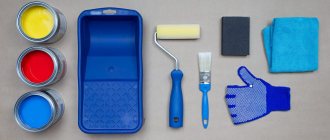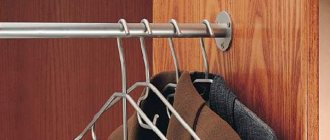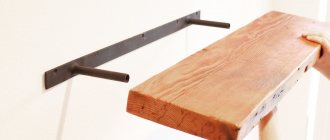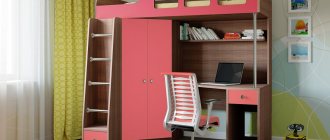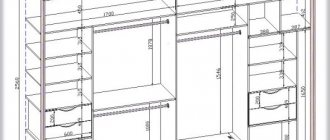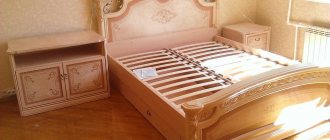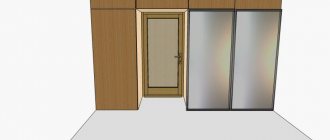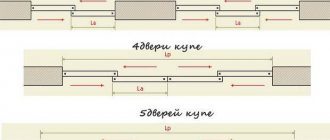Share
Tell
Share
Tweet
Share
Organizing storage space at home so that everything is at hand and there is no mess is not an easy task. Recently, on social networks, at the instigation of a girl with the nickname Jelsamina, they discussed super useful tips for those who are almost desperate to clean out their closet. We get rid of unnecessary things, wisely send out-of-season items for storage, figure out how best to store shoes and clothes - in general, a lot of useful information in one material.
For example…
- A separate pile for duvet covers , a separate one for sheets, a separate one for pillowcases.
- Storing in pillowcases. Each set comes in a pillowcase of its own color. Neat and compact. And most importantly, you don’t have to look for anything.
- Each set is in its own pile, tied with a beautiful wide ribbon . Exquisite and for the lazy.
- Rolls . This option is suitable for both towels and bed linen. Can be stored directly on shelves or in boxes.
- In vacuum bags , if you have a shortage of space. But then don’t forget to divide the laundry according to seasonality (according to the density of the material).
- In boxes/cases of the same style. Large – for duvet covers in rolls. Smaller - for sheets. And the third is for pillowcases.
And don't forget the lavender bags!
Using organizers
Recently, special organizers have been in demand. They are designed for compact storage of underwear, socks, shoes and even bedding. It is recommended to place such devices in a closet - how to put things in closets is rationally described below:
- It is most convenient to store a bra in an organizer: for this you do not need to fold it in half, you just need to put it in a special insert in the box;
- before putting towels and bath accessories in the organizer, sort them by material and size;
- Small containers made of plastic or metal, divided into cells, are suitable for socks;
- It is allowed to store a bra together with panties - in this case it is worth purchasing a special device for several compartments;
- It is good to place shoes without boxes in a hanging organizer, where each pocket is intended for one pair of shoes.
If the apartment has only one closet, try to put unused items in special compartments for the season. This is how you can maximally unload the internal space for convenient placement of frequently worn clothes.
Wardrobe for pumping: 15+ tips for storing clothes and shoes
You open your closet and you have absolutely nothing to wear. At the same time, the wardrobe is simply bursting with things. If this situation is familiar to you, our material may be useful.
Where do unnecessary things come from?
Man is a very thrifty creature by nature, everyone is taught this from childhood, so in adult life everyone is very sorry to part with their favorite and not so favorite things. Having stored them for years on the shelves of a wardrobe, a person constantly convinces himself that maybe someday he will wear an old dress or lose weight to “fit into” his favorite jeans.
First of all, you need to conduct a global audit and go through absolutely all things.
But often, this is also confirmed by psychologists: “An item that has been gathering dust on a shelf for several years is unlikely to be worn in the future,” so after auditing your own wardrobe, it is worth getting rid of things that have not been worn for several years, forever.
It will take some time, but the result will pleasantly please you.
Important! Psychics vying with each other to repeat that it is absolutely forbidden to store broken, torn, worn-out things! You should part with them immediately, so as not to attract negativity, quarrels and financial difficulties.
If it’s simply a shame to throw away items from your wardrobe, you can always take them to a thrift store, and you can also earn extra money for new clothes.
It is better to immediately take dilapidated and old wardrobe items to a landfill or burn them.
Important! Each item stores energy information about the owner; loved ones, which they wear with joy, attract positive energy, unloved or “forgotten” ones take this energy away.
Rules for compact storage
It seems that neatly folding clothes is easy - you just fold them at the seams. But when it comes to practice, usually nothing comes of it, and things are sent to storage in a bulky form, taking up a huge amount of space. The result is that even a large closet cannot accommodate the entire arsenal of outfits. To correct the situation and learn how to put things in a closet compactly, let’s look at each type of clothing and how to store it separately.
Skirts
An accessible storage option is hanging skirts on hangers. This method will take up too much space and hangers. Let's look at tips for rational storage of skirts, relevant for girls who love this item of clothing:
- fold the skirt in half;
- roll it into a tight roll;
- Carefully place on the cabinet shelf next to products of the same type.
The rest of the skirts will still have to be placed on a hanger - long-length items, as well as options made from light, airy fabrics. It is better to store denim skirts in special organizers with cells, having previously sorted the products by color and material.
Socks
Many housewives are concerned about the question: how to fold socks so as not to lose a pair? This can be done in the manner described below:
- take 2 socks and fold them at the seams;
- starting from the toe side, roll the products, forming a tight roller;
- Having reached the toe, leave one sock untouched, and turn the other inside out;
- wrap both rollers into one, creating a compact sock ball.
You can also do the same with storing baby socks. When folded, socks are stored in a special linen drawer. Before you roller fold your socks, sort them correctly. This must be done after every wash.
T-shirts
Many people have tried folding T-shirts or T-shirts on their own so that they fit in a stack on a shelf. To do this quickly, we suggest watching the video below on compact folding of the product. It consists of the following stages:
- place the T-shirt in front of you so that the front part is down;
- wrap both sleeves alternately over the middle part of the product;
- Fold the bottom of the T-shirt about a third, then fold the item again.
The method is considered traditional and will allow you to place textiles on the closet shelf compactly. Practical plastic containers for storage will help solve the problem of quick access. It is better to place the products in them not in a stack, but in a row.
Sweaters, blouses and shirts
Formal shirts and blouses are used every day to attend school or work. It is impossible to do without business elements, so every person has them. Let's look at the main way to compactly put business things in a closet:
- buttons on clothes must be fastened;
- place the product face down on the table;
- carefully straighten the item at its base;
- bend one sleeve towards the other sleeve along with the main part;
- direct the bent sleeve to the bottom of the product;
- do the same manipulation with the opposite element;
- when all the sleeves are attached to the back, visually divide the blouse into 3 parts;
- First, fold the bottom of the product, then the second part, resulting in a neatly folded shirt.
Many users ask the question: how to fold bed linen so that it takes up less space in the wardrobe? You need to sew small covers for each set of linen yourself. Before folding bed linen, you need to iron it - this way it will not only be stored better, but also will not require additional processing before use.
Trousers and jeans
Most consumers store business-style trousers on a hanger, citing the fact that this way they wrinkle less. This is true, but when stored this way, the products take up a lot of space in the wardrobe. Therefore, it’s worth learning how to properly fold things like jeans and trousers:
- first, straighten all the pockets of the product - put your hands inside and distribute the fabric evenly over the jeans;
- smooth out any noticeable wrinkles;
- Next, you need to put one pant leg on the other, drawing a fastening line along the seams;
- fold the product in half, then bend part of the fabric inside the fold line;
- at the last stage, you need to fold the jeans again and put them in the closet.
The same method is used to fold trousers, shorts, capris and breeches. Packed items are perfectly stored in the wardrobe on a shelf in a stack.
Jackets
Traditionally, this item of clothing is stored on hangers. This is due to the dense sewing fabric, which is difficult to iron. As often happens, you need to put on a jacket quickly, so the easiest way is to remove the item from the hanger.
If there is not enough space in the closet to accommodate a large number of things, you should resort to compact storage of jackets. They are folded in the same way as shirts and blouses, folding the sleeves of the product behind the back. It is better to store jackets in a closet in a stack.
For careful long-term storage, fold the jacket according to the same principle as shirts, first turning the product inside out.
Installing shelves
If the filling of the cabinet was not thought out in advance, it is worth “pumping” it yourself. It happens that the shelves provided by the manufacturer are located at a great distance from each other. A stack of folded clothes ends up too high and quickly creates clutter.
Typically, shelves are made from laminated chipboard, sawed to fit the width and depth of the cabinet, protecting the ends with an edge and fixing them with screws and shelf holders.
BELTS AND TIES
This is where the delimiter module comes in handy. Their cells can accommodate the entire collection. Roll into a ring, not too tightly, with the buckle facing outward to avoid creases. And each one in a separate cell. Wide ones, if space allows, can be laid out flat, and corset ones can be placed vertically.
Another option is to hang them on special hangers. A belt hanger can be attached to a closet door, provided that the belts do not touch clothing (otherwise, hello, puffs!)
Cabinet compartments: what should be stored where?
The upper part of the closet is called the mezzanine; seasonal or rarely used items are stored here - outerwear, suitcases, travel bags, etc.
The middle part is equipped with shelves and hangers. This is where items for everyday use and towels are placed.
The bottom is an ideal place for shoes.
Getting rid of unnecessary things, or organizing an audit of things in the closet
To begin with, you need to take out all the things without exception from the closet, both seasonal and not, then you need to:
- Carefully check for wear, stains, holes and other damage;
- Set aside items that are worn constantly, separately those that have been worn several times or are inappropriate in size, and, of course, those that have not been worn for a very long time (1-2 years);
- It’s much easier with children’s things; those that the child has grown up need to be distributed to families with children or sent to the attic if more children are planned.
Those things that still cannot be thrown away must be placed in a separate box, and if after a while you don’t remember about it, then you can safely get rid of them.
